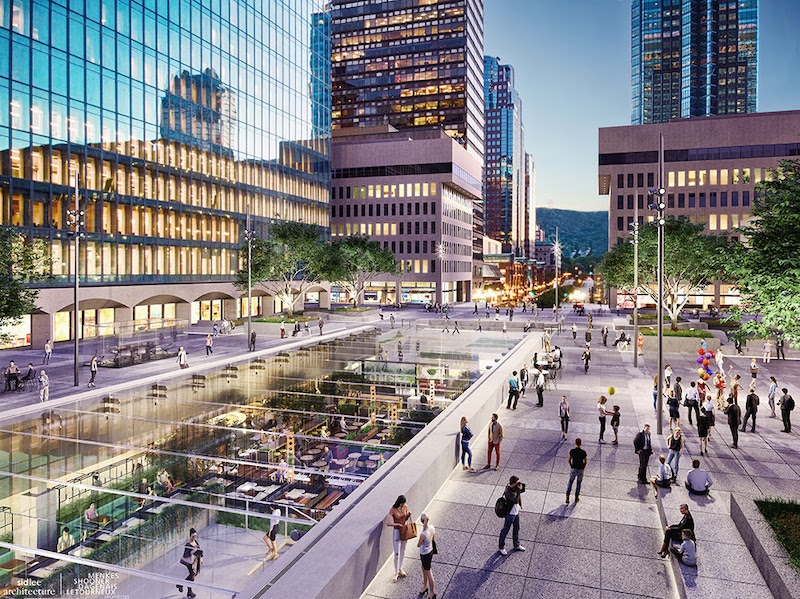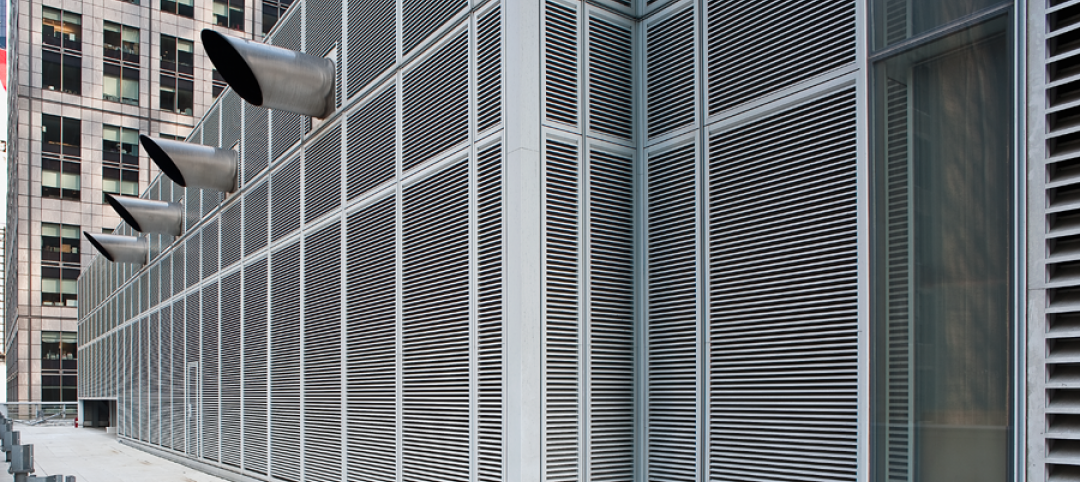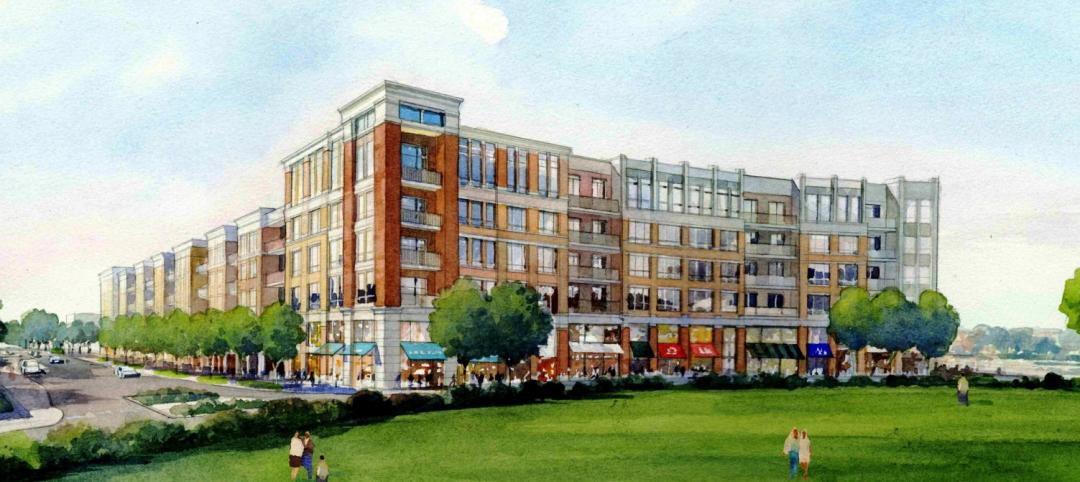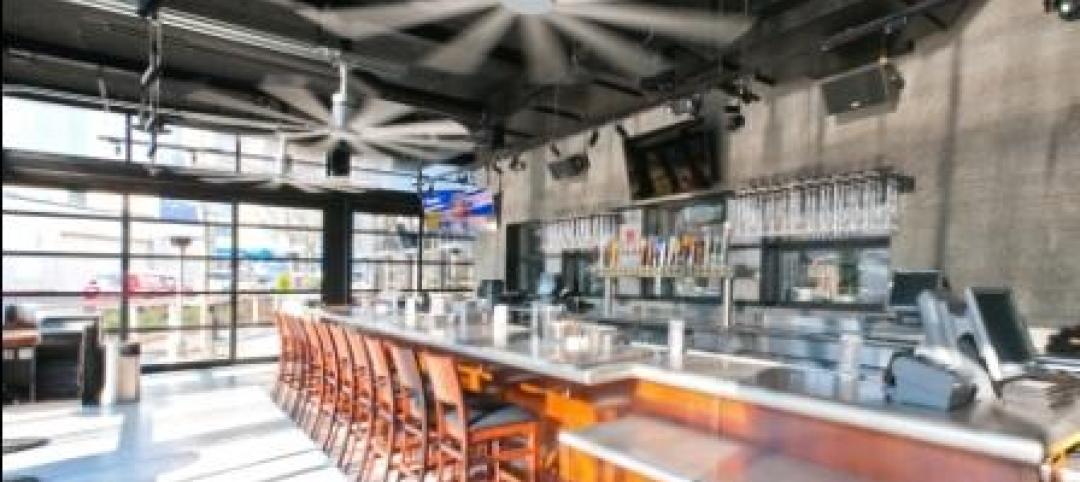Last week, Le Cathcart Restaurants et Biergarten officially opened its 35,000-sf food court within the esplanade at Place Ville Marie, a revitalized central mall in downtown Montreal, Quebec.
The food court—whose 15 kiosks have seating for more than 1,000 patrons and include three restaurants—is adjacent to a shopping center, and positioned under a 630-sm (6,782-sf) all-glass roof that is part of the Place Ville Marie’s new entrance pavilion. The 45x15-m roof—the first project in Quebec for the façade construction specialist Seele, and its fourth in Canada—is 1.2m above ground level.
The roof component, which was completed in December 2018, consists of 15m-long by 2.5m-wide insulating glass panels weighing up to 5.6 tons each. Eight-ply laminated glass beams, also 15m long, support the glass panels. The corbels supporting the beams are hidden in the walls, presenting the illusion that the roof is hovering above ground.
The roof is bookended by entrance canopies that cantilever up to 4.2m beyond the entrance facades. The canopies are supported by 14-ply glass beams. The roof took six months to complete, and had to deal with a confined jobsite space and, in its latter stages, Montreal’s wintry weather. It required a 2.5-ton vacuum lifter with 60 suction cups to place the glass units. To support a mobile crane for installing the glass, the existing structure needed to be strengthened.
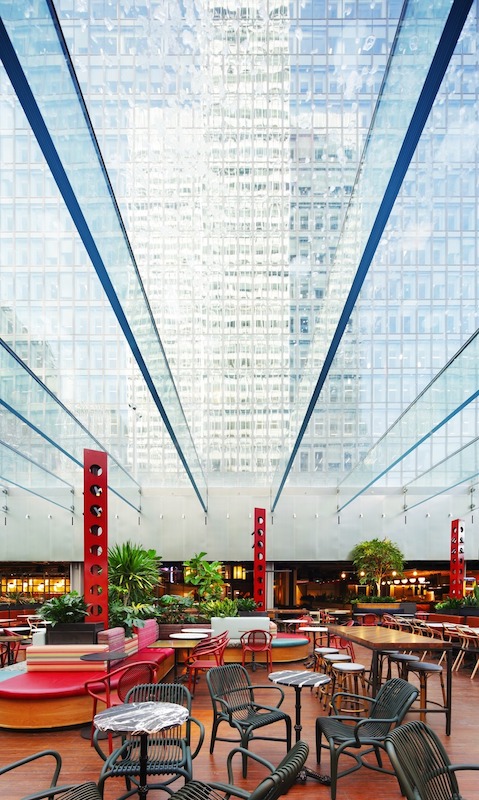
Part of the 1,000-seat food court underneath Place Ville Marie's glass roof.
The client, real estate investment firm Ivanhoè Cambridge, presented this project for the first time last May at Façade Tectonics in Toronto. “Every project has its own challenges, and the handling of extra-large glass needed careful preparation,” recalls Michael Steinhuelb, Vice President of Seele Canada. “Quality, safety, and timeliness [were] our prime considerations in installation, and we learned a lot about extreme winter installation … that we can apply to other projects.”
The building team for Place Ville Marie’s revitalization includes Sid Lee Architecture (which conceived the project with A5 Hospitality) and Menkès Shooner Dagenais LeTourneux Architectes (architects), Pomerleau (GC), NCK (main contractor), and NCK (engineer) BPA (electromechanical engineer), Lightmotion (lighting consultant), and BC2 (landscape architect). Seele provided design, production, and installation of the glass roof and canopies. The $200 million revitalization of the esplanade is part of Projet Nouveau Centre, Ivanhoe Cambridge’s $1 billion-plus vision for downtown Montreal, which is consolidating four major projects: Place Ville Marie (originally co-designed by I.M. Pei and Henry N. Cobb), Montreal Eaton Centre, the 27-story office building Maison Manuvie, and the 950-room Fairmont The Queen Elizabeth Hotel.
Related Stories
| Jul 20, 2012
Global boom for hotels; for retail, not so much
The Giants 300 Top 10 Firms in the Hospitality and Retail sectors.
| Jul 17, 2012
KM/Plaza changes name to Plaza Construction
Lands new projects including the Perry South Beach Hotel and Dadeland Mall Kendall Wing Expansion.
| Jun 1, 2012
New BD+C University Course on Insulated Metal Panels available
By completing this course, you earn 1.0 HSW/SD AIA Learning Units.
| May 29, 2012
Reconstruction Awards Entry Information
Download a PDF of the Entry Information at the bottom of this page.
| May 24, 2012
2012 Reconstruction Awards Entry Form
Download a PDF of the Entry Form at the bottom of this page.
| Apr 30, 2012
HSA Commercial selected as consultant for Orland Park’s Main Street Triangle project
HSA will be responsible for designing an overall mixed-use merchandise plan, attracting a unique retail tenant mix and completing leases with prospective tenants.
| Apr 20, 2012
Shawmut completes Yard House Restaurant in Boston
12,000-sf restaurant marks new addition to Boston’s Fenway neighborhood.
| Apr 19, 2012
KTGY Group’s Arista Uptown Apartments in Broomfield, Colo. completed
First of eight buildings highlights unique amenities.
| Apr 16, 2012
University of Michigan study seeks to create efficient building design
The result, the researchers say, could be technologies capable of cutting the carbon footprint created by the huge power demands buildings place on the nation’s electrical grid.


